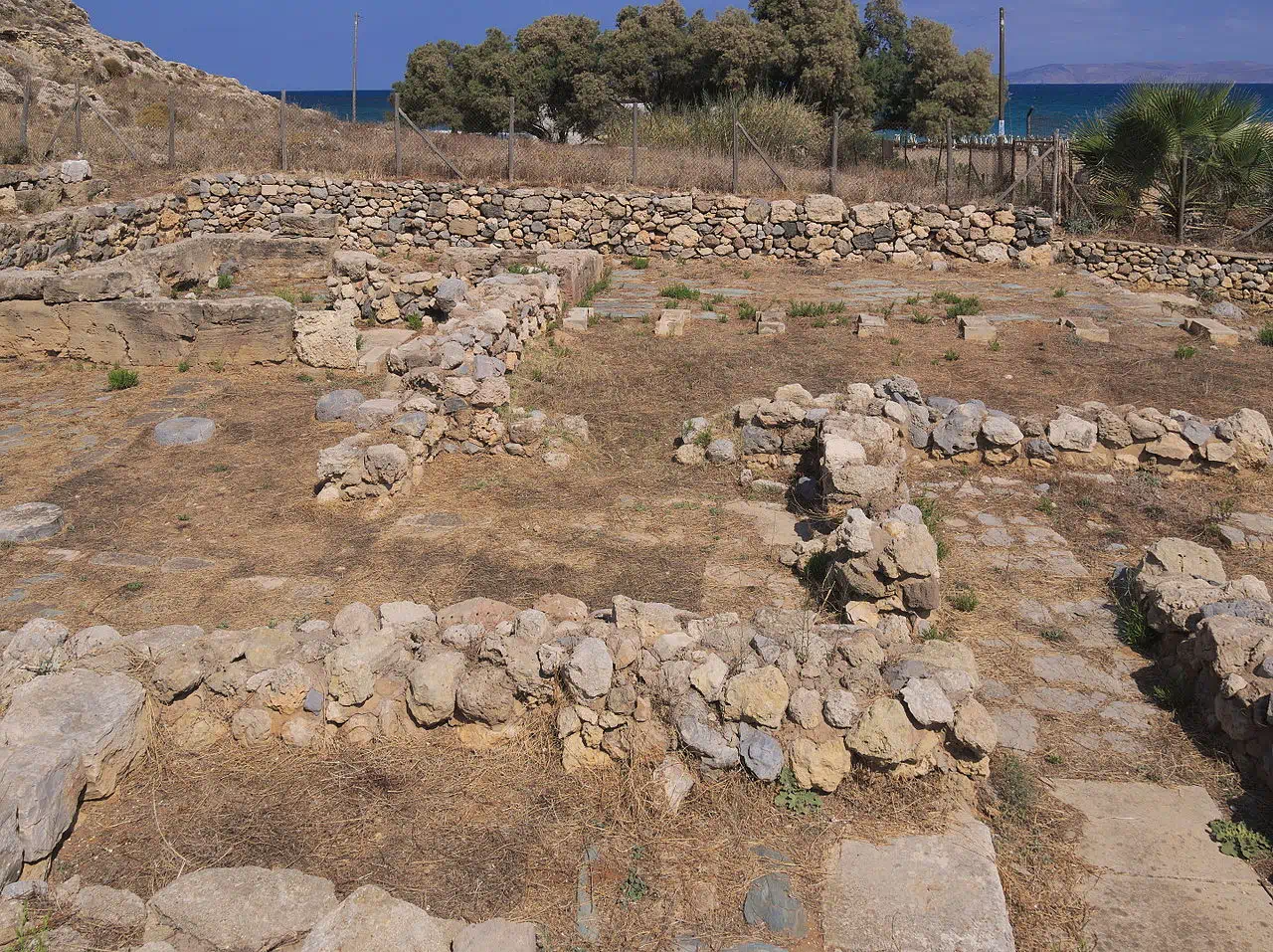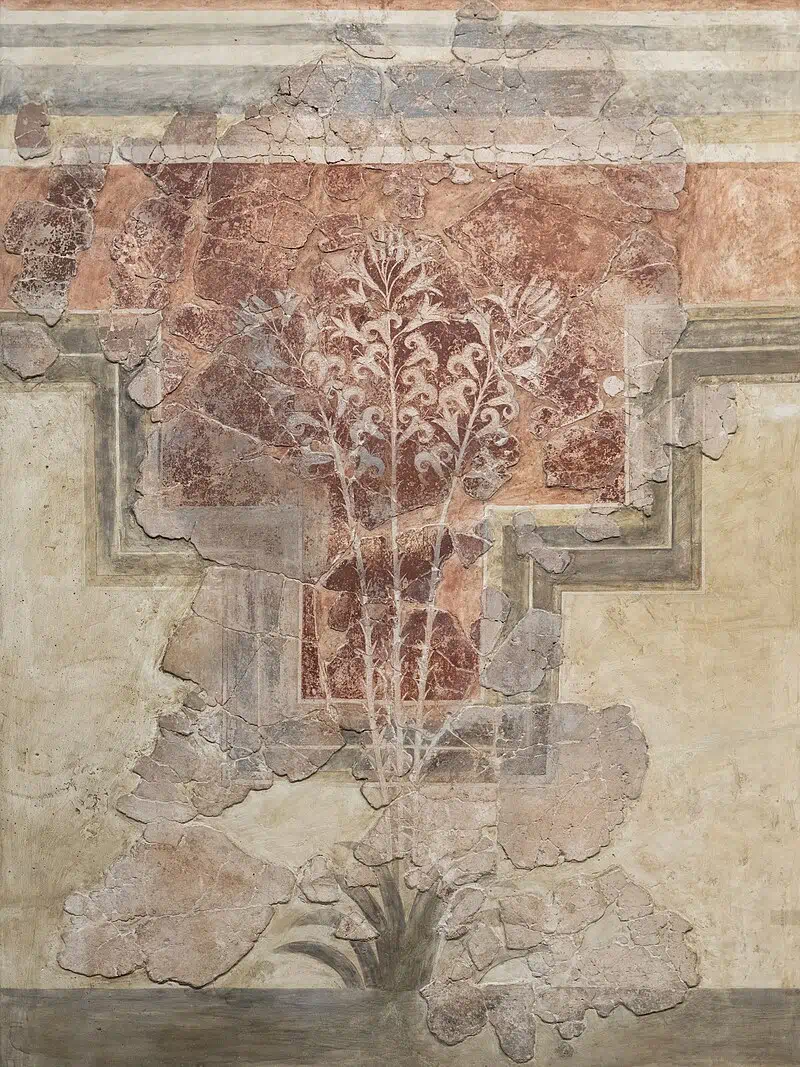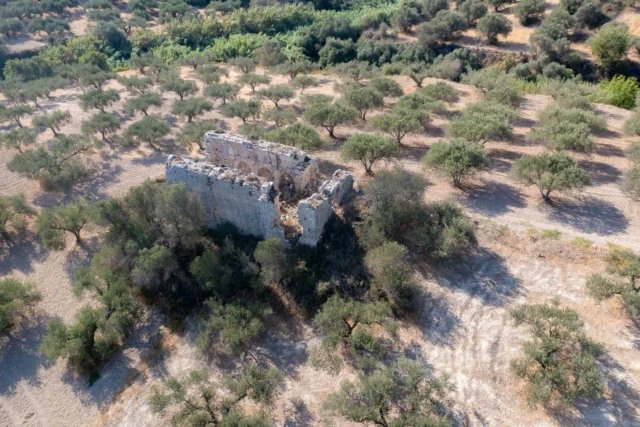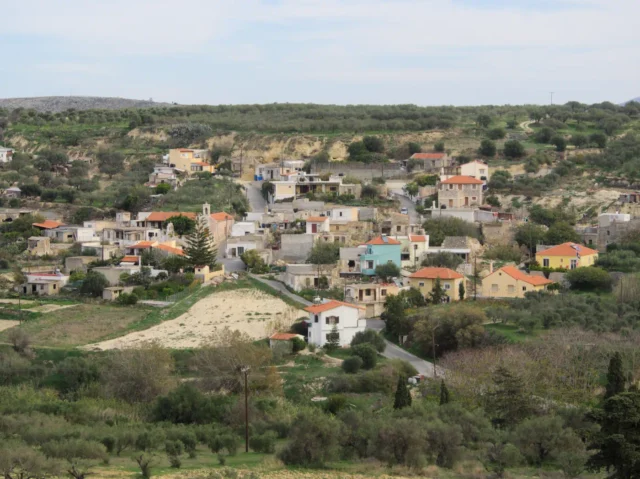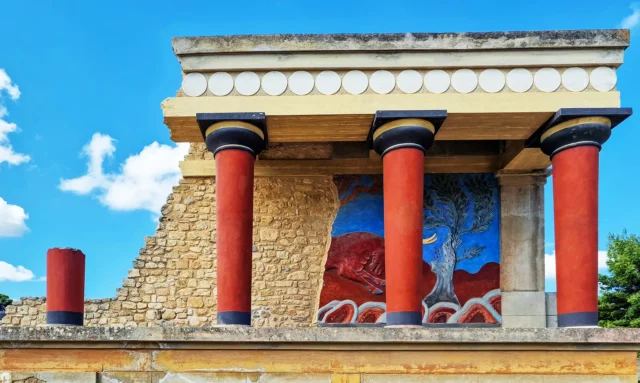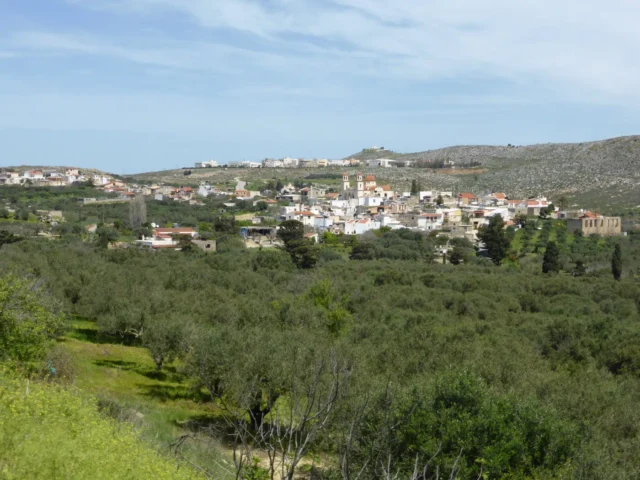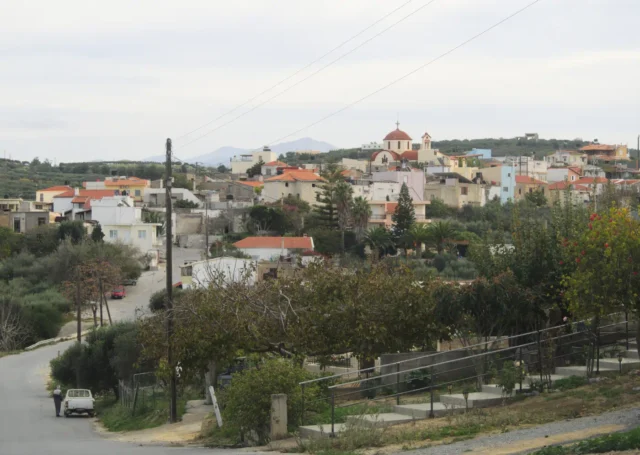Geographic Context
Amnissos is located on the north coast of Crete, about 7 kilometers east of Heraklion . It lies at the mouth of the Karteros River (which was called the Kairatos River in antiquity), where it forms a sandy beach about 2.5 kilometers long .
A small rocky hill called Paliochora is near the eastern end of the beach . There is also a small island off the coast . The sea level today is about 3 meters higher than it was in ancient times, so it is likely that the island was once connected to the mainland, forming two small bays . The western bay would have been protected by the rocky peninsula where the Heraklion airport is now located .
According to Stergios Spanakis, the Karteros River was named after the Byzantine general Krateros . General Krateros successfully landed on the beach and initially defeated the Saracens . However, the Saracens then attacked the Byzantine army while they were celebrating their victory and killed them all . In ancient times, the river was called Kairatos or Amnissos . The deities Amnisiades are associated with the river .
Amnissos was connected to Knossos by a road that was discovered in 1985 .
The Name Amnissos
The name Amnissos is significant, appearing in Linear B inscriptions as “a-mi-ni-so” . This indicates the area’s importance and its connection to the Minoan civilization. The presence of the harbor, various buildings, and an open-air archaic sanctuary dedicated to Zeus further underscores its historical significance.
Mythological Significance
Amnissos also has a place in Greek mythology. It is said that the omphalos, or navel, of Zeus fell there when the newborn god was being carried to the Diktaean Cave to be hidden from Kronos . As a result, the area was referred to as the Omphalian Plain. This mythological association adds a layer of cultural and religious significance to the archaeological site.
The Minoan Villa of the Lilies
Architecture and Features
The Villa of the Lilies is a luxurious, two-story house, characteristic of Minoan villas, built with ashlar blocks in the “Paliochora” area of Amnissos . It has a hall with multiple doors (“polythyra”), a bathroom, stairs, and covered, paved areas . The villa’s name comes from the beautiful frescoes of lilies that once decorated its walls .
Construction and Destruction
The villa is believed to have been built during the Middle Minoan IIIA period, around the 17th century BC . Its destruction, possibly caused by an earthquake or tidal wave, is estimated to have occurred around 1500 BC . Unfortunately, the monument also suffered damage during World War II due to vandalism by German soldiers .
Excavation
The building was excavated in 1932 by archaeologist Spyridon Marinatos .
Site: Key Points
- Construction Period: Middle Minoan IIIA period, approximately 17th century BC .
- Location: Amnissos, Crete, Greece .
- Historical Significance: A luxurious villa, showcasing Minoan architecture and frescoes, highlighting the culture and lifestyle of the Minoan civilization .
- Current Status: Partially excavated, protected archaeological site, not open to the public .
References
- Marinatos, S. 1933. “The Minoan Villa of the Lilies at Amnissos.” The Annual of the British School at Athens, 32, 54-67.
- Gesell, G. C. 1985. Town, Palace, and House Cult in Minoan Crete. Gothenburg: Paul Åströms Förlag.
- A. Ioannidou-Karetsou, 2008, Iraklio, The Unknown History of the Ancient City, Heraklion.








